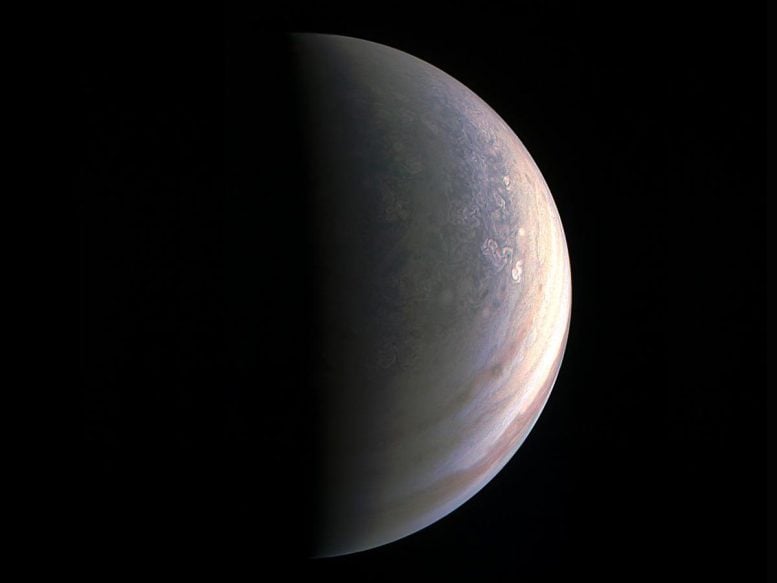
Research offers new insights into protecting Earth from harmful solar radiation.
A team at the University of Minnesota Twin Cities has identified and studied a previously unknown type of plasma wave within Jupiter’s aurora. The discovery provides new insight into auroral activity on other planets and, in turn, deepens our understanding of how Earth’s magnetic field shields the planet from the sun’s harmful radiation.
The findings were published in Physical Review Letters, a peer-reviewed, multidisciplinary, high-impact scientific journal.
Data from Juno’s polar orbit
The finding comes from data collected by NASA’s Juno spacecraft during its historic low-altitude pass over Jupiter’s north pole. This provided researchers with their first opportunity to apply advanced data analysis techniques to study the planet’s northern polar regions in detail.
“The James Webb Space Telescope has given us some infrared images of the aurora, but Juno is the first spacecraft in a polar orbit around Jupiter,” said Ali Sulaiman, an assistant professor in the University of Minnesota School of Physics and Astronomy.
Plasma and aurora formation
Magnetized planets such as Jupiter are surrounded by plasma, a superheated state of matter in which atoms split into electrons and ions. These charged particles are funneled into the planet’s atmosphere, where they excite atmospheric gases and produce auroras. On Earth, this process creates the well-known green and blue lights of the northern and southern skies. In contrast, Jupiter’s auroras cannot be seen without specialized instruments, as they appear only in ultraviolet and infrared wavelengths.
The team’s analysis revealed that due to the extremely low density of Jupiter’s polar plasma combined with its powerful magnetic field, the plasma waves have a very low frequency, unlike anything previously observed around Earth.
“While plasma can behave like a fluid, it is also influenced by its own magnetic fields and external fields,” said Robert Lysak, a professor in the University of Minnesota School of Physics and Astronomy and an expert on plasma dynamics.
The study also sheds light on how Jupiter’s complex magnetic field allows particles to flood into the polar cap, unlike Earth, where the aurora forms a donut pattern of auroral activity around the polar cap. The researchers hope to gather more data as Juno continues its mission to support further research into this new phenomenon.
Reference: “New Plasma Regime in Jupiter’s Auroral Zones” by R. L. Lysak, A. H. Sulaiman, S. S. Elliott, W. S. Kurth and S. J. Bolton, 16 July 2025, Physical Review Letters.
DOI: 10.1103/fn63-qmb7
The research was funded by NASA and the National Science Foundation (NSF).
Never miss a breakthrough: Join the SciTechDaily newsletter.